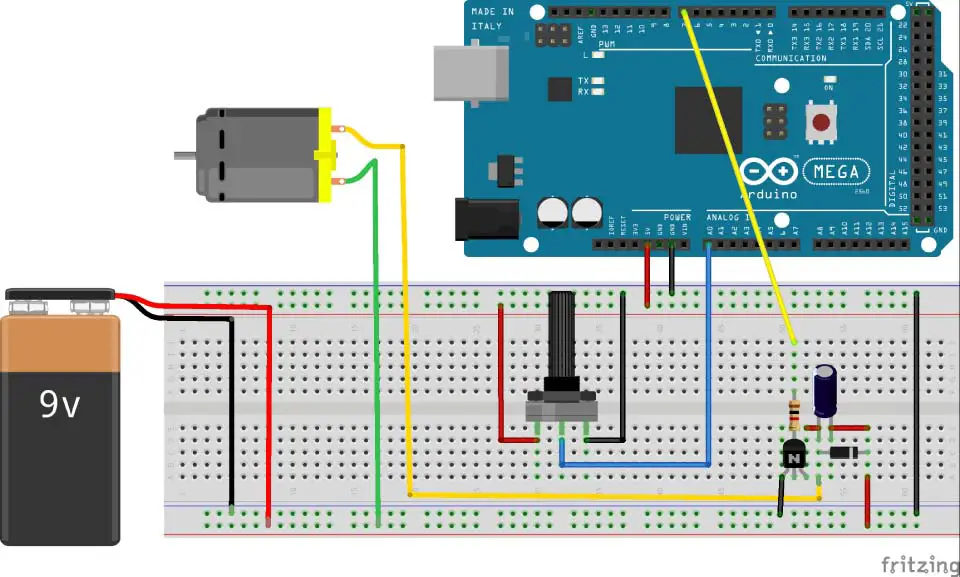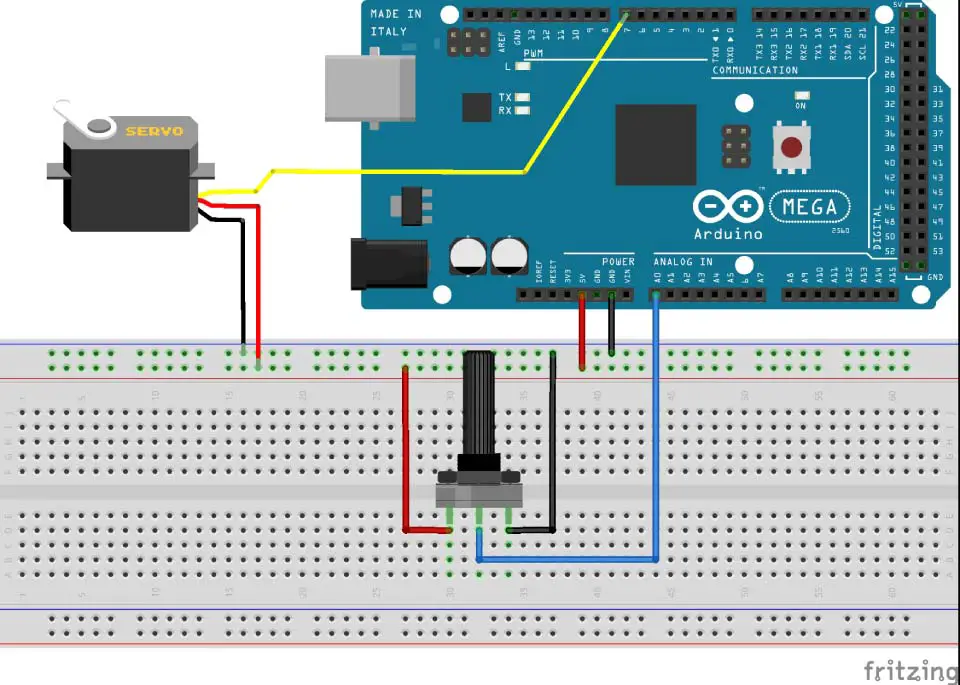Welcome to the fourth Arduino Tutorial from our Arduino Tutorial Series. In this tutorial we will learn how to control DC and Servo Motors using PWM (Pulse Width Modulation).
This is a Step by Step Video Tutorial which is easy to be followed. Also, below the video you can find what Parts do we need for this tutorial and the Source Codes of the Examples in the video.
Components needed for the first example
- DC Motor ……………………………………. Amazon / Banggood / AliExpress
- or CPU Fan DC motor ………………….. Amazon / Banggood / AliExpress
- Battery 9V or Adapter (9-12V) ………. Amazon / Banggood / AliExpress
- Arduino Board ……………………………. Amazon / Banggood / AliExpress
- Breadboard and Jump Wires ..……… Amazon / Banggood / AliExpress
- NPN Transistor ………………………….. Amazon / Banggood / AliExpress
- Potentiometer …………………………….. Amazon / Banggood / AliExpress
- Diode ………………………………………… Amazon / Banggood / AliExpress
- Capacitor – 1uF …………………………… Amazon / Banggood / AliExpress
- Resistor – 1k O ……………………………. Amazon / Banggood / AliExpress
Disclosure: These are affiliate links. As an Amazon Associate I earn from qualifying purchases.
Circuit schematic of the first example, controlling a DC Motor

Source Code of the first example, controlling a DC Motor
int pwmPin = 7;
void setup() {
Serial.begin(9600);
pinMode( pwmPin, OUTPUT);
}
void loop () {
int potValue = analogRead(A0);
int newpotValue = map(potValue, 0, 1023, 0 , 255);
analogWrite(pwmPin, newpotValue);
}Code language: JavaScript (javascript)Parts needed for the second example, controlling a Servo Motor
- Servo Motor
- Potentiometer
Circuit schematic of the second example, controlling a Servo Motor

Source Code of the second example, controlling a Servo Motor
#include <Servo.h>
Servo myServo;
void setup() {
myServo.attach(7);
}
void loop() {
int potValue = analogRead(A0);
int angleValue = map(potValue, 0, 1023, 0, 180);
myServo.write(angleValue);
delay(10);
}Code language: HTML, XML (xml)